Westminster Presbyterian Church - Table of Contents
Exterior
- Westminster Presbyterian Church
724 Delaware
Avenue, Buffalo, NY
located on Millionaires'
Row
|
Erected: |
1858-59 |
|
Architect: |
Harlow M. Wilcox |
|
Master mason: |
Henry Rumrill |
|
Brick |
Light "yellow" brick, likely to have come from Jesse Ketchum's native Canada |
|
Style: |
Romanesque Revival |
Windows on the Delaware, north and south walls have round arches. Pointed Gothic arches were installed on the interior when new windows were installed, 1931-1952
 July 26, 2019 photo 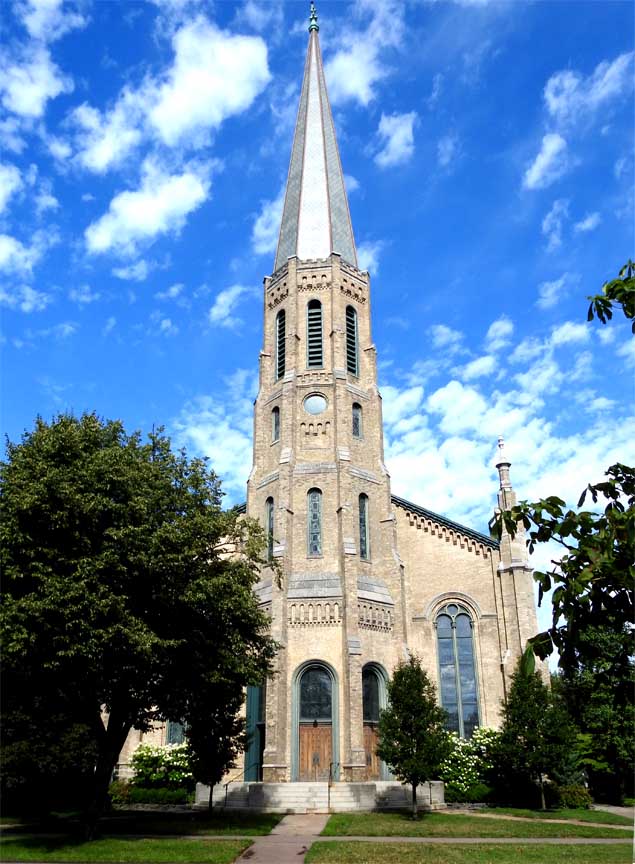 July 26, 2022 photo Spire tops the steeple Gable roof End pinnacles 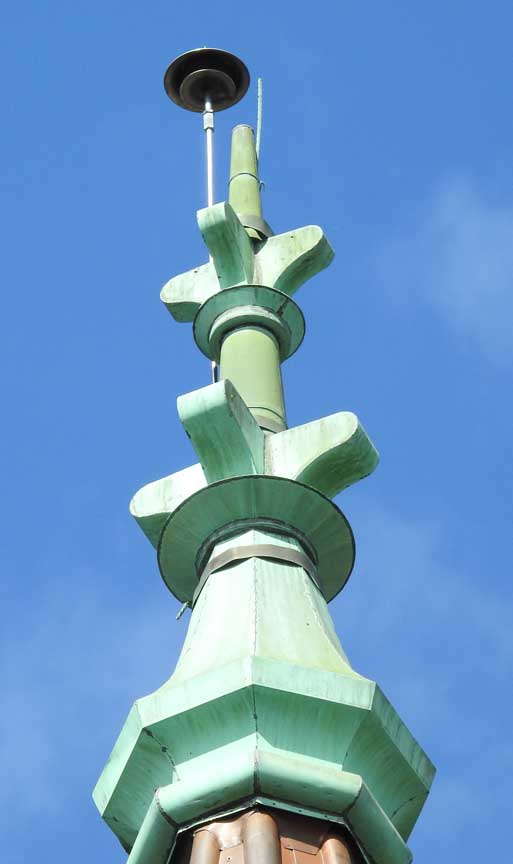 July 26, 2022 photo Spire finial 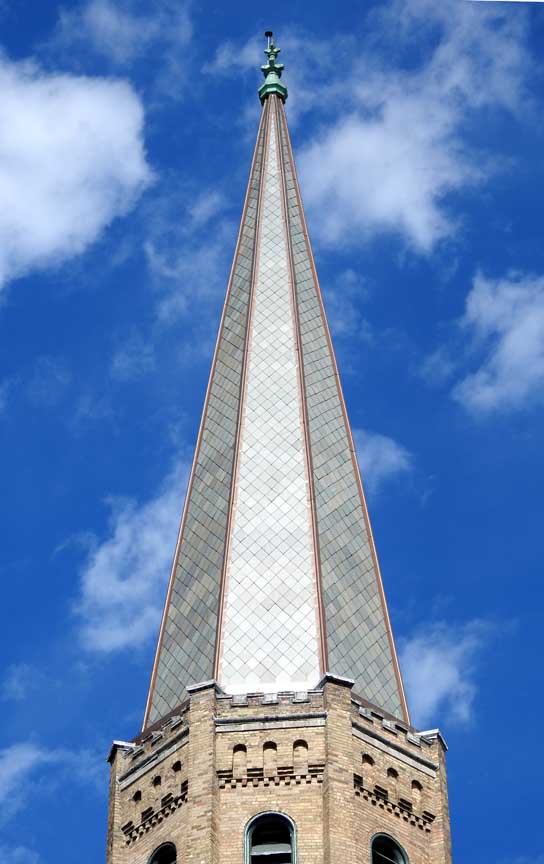 July 26, 2022 photo Spire with copper and slate topped by finial 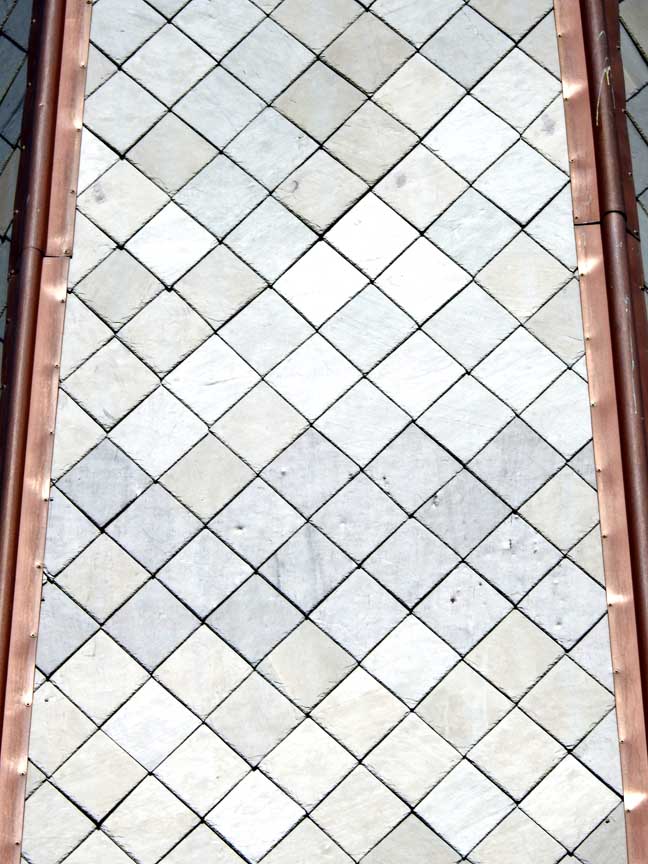 July 26, 2022 photo Detail from previous photo: copper, slates in lattice pattern 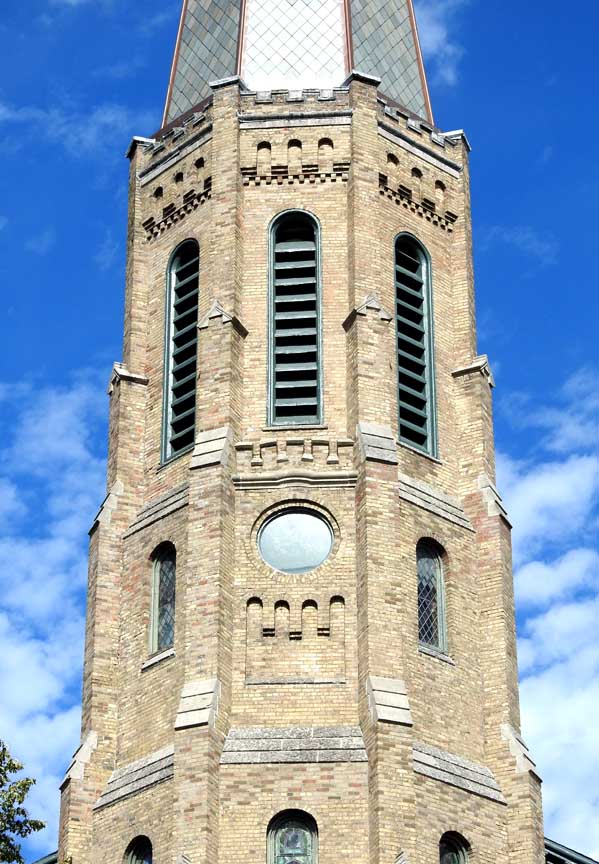 July 26, 2022 photo The bell from the original chapel marked A. G. Buffalo, 1850 (Adam Goode Brass and Bell Foundry on Ohio Street near Washington) was hoisted into the two hundred foot steeple in the belfry where it hangs today. Romanesque Revival features on steeple Louvered belfry in third floors Roundel in second floor Round (Romanesque) arched windows Stepped buttressing Corbel tables 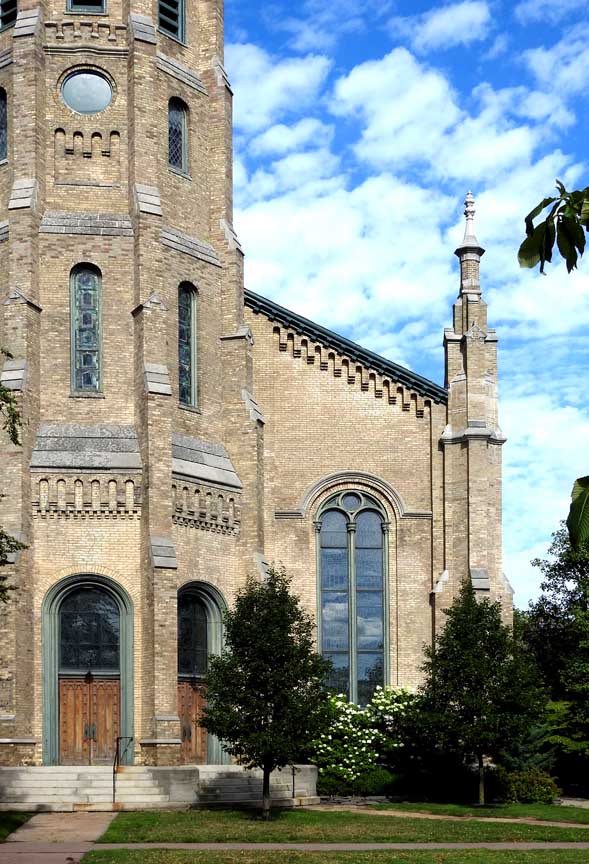 July 25, 2022 photo 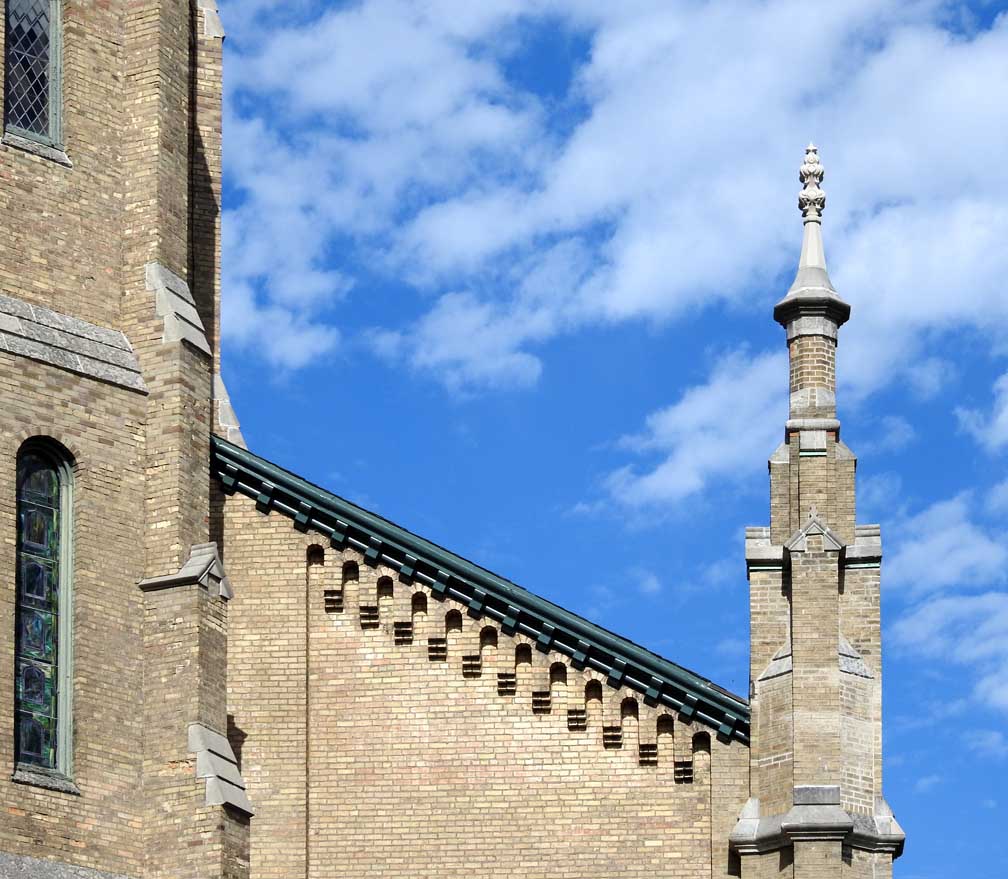 July 15, 2022 photo Corbel table under gable roof End pinnacle topped with finial  July 26, 2019 photo Arcade window Stone window head Note step buttressing at corner of building 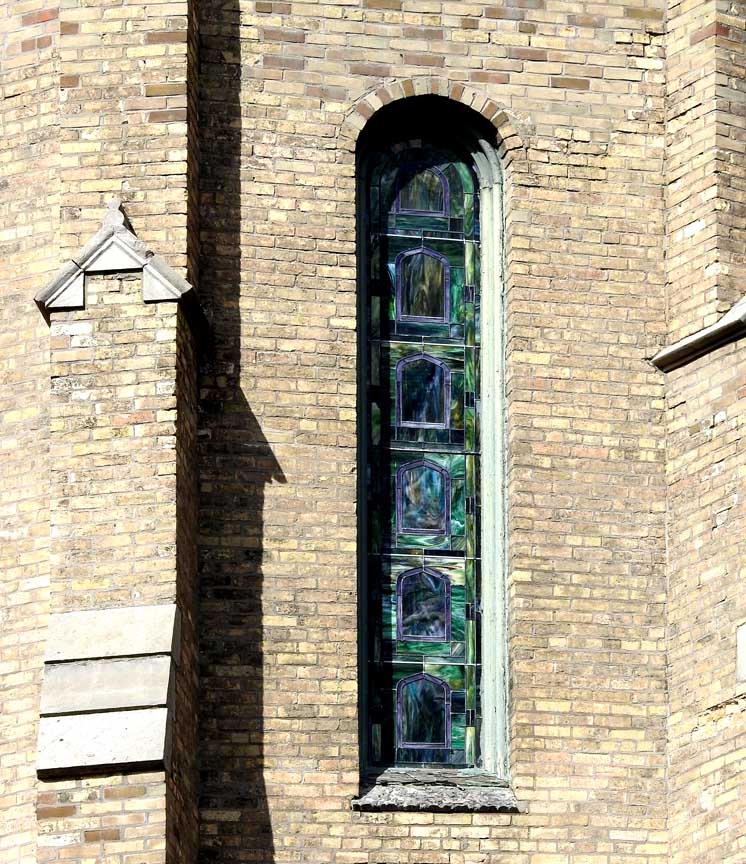 July 26, 2022 photo Round Romanesque Revival stained glass window with opaslescent glass installed by Tiffany Studios  July 26, 2019 photo Compound arch surround Double wood carved doors with 6-light tympanum 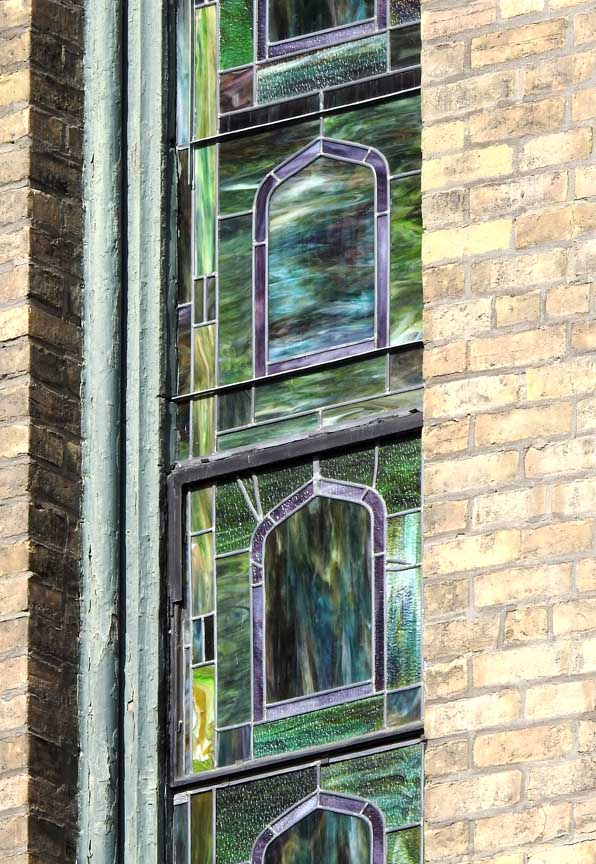 July 26, 2022 photo Tiffany Studios opalescent glass 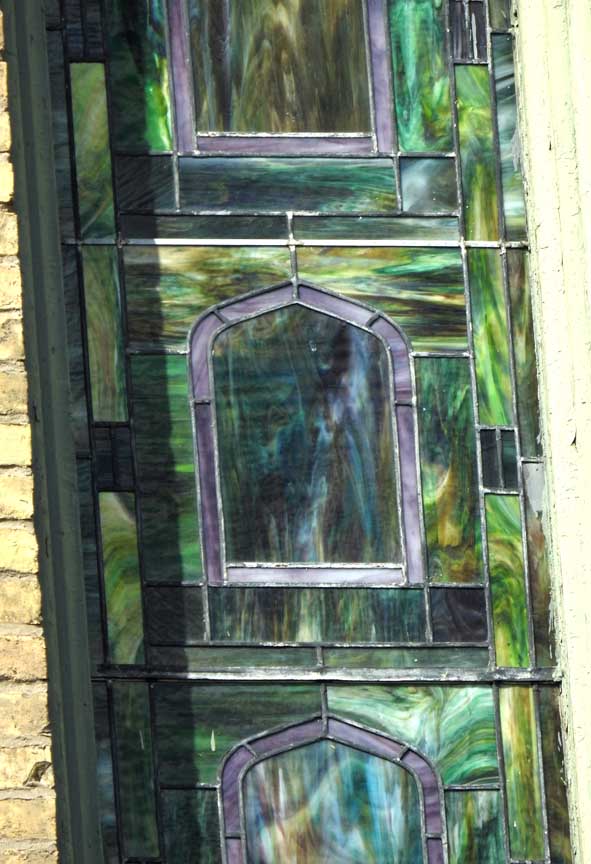 July 26, 2022 photo Tiffany opalescent glass 
July 26, 2019 photo Medina sandstone sidewalk on Delaware  July 26, 2019 photo Main entrance; double paneled doors with 6-light stained glass tympanum Compound arch surround Entrance flanked by buttresses  July 26, 2019 photo Entrance flanked by buttresses Compound arch surround Double wood carved doors with 6-light tympanum  July 26, 2019 photo Double wood carved doors 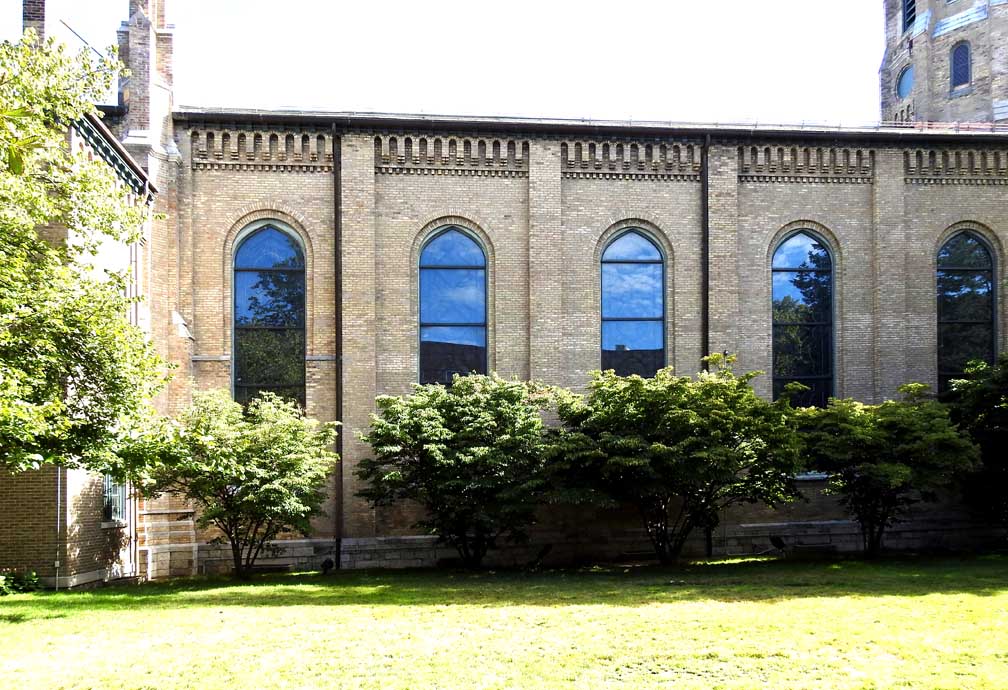 July 26, 2022 photo South elevation 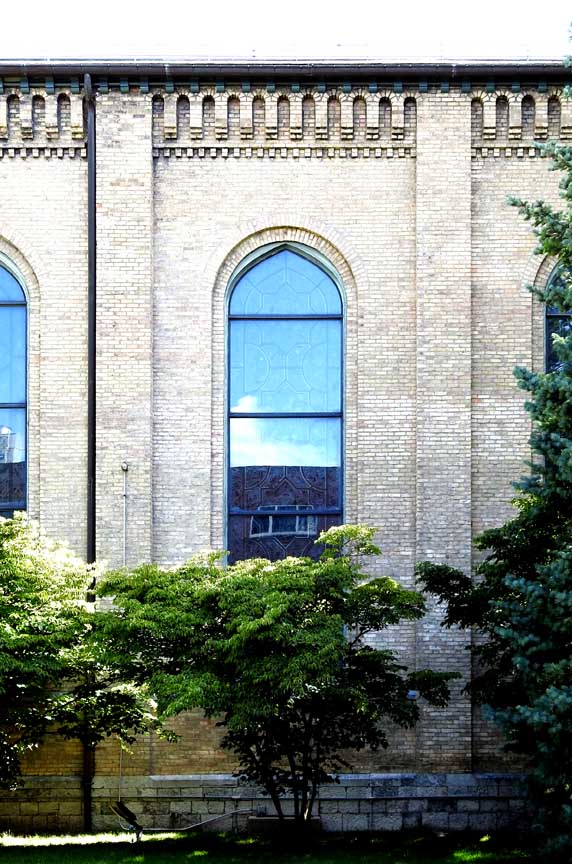 July 26, 2022 photo  North side entrance July 26, 2019 photo Gable roof with carved scalloped-edge vergeboard and stickwork in tympanum Pair of double doors with leaded glass Leaded glass in transom  North side entrance July 26, 2019 photo Pair of double doors with leaded glass Leaded glass in transom |
  Celtic Cross 2009 photograph taken by Westminster Church historian John McClive  Celtic Cross 2005 photograph "We
associate the Celtic Cross with St. Patrick, St. Columba and
others who led missionaries bringing the Christian faith to
Ireland, Scotland and northeast England in the 5th through
10th centuries. It was done peacefully, with Love, not
force.
"For this reason, the Celtic Cross stands as a symbol for World Peace in today's war-torn, violent world. Those lands adopted Christianity voluntarily through persuasion and the missionaries' example of courage and conviction. Although often facing entrenched Druid priests who controlled the people through pagan religion, or hostile local chieftains who could have murdered them at any moment, missionaries showed no fear be-cause of deep faith that God would protect them. "Their message about one God who loved all living things and wanted people to achieve the fullest measure of their lives ultimately appealed more than continued bloodshed. Jesus' parables and commandment to "Love your neighbor as yourself" resonated in the rural culture of small villages and clan loyalty. "As monks helped the poor, people saw God's Love in action through faith and service. The Celtic world became the center of stability and learning at the same time Western Europe was in the "Dark Ages," when violence destroyed Western civilization. Newly empowered lower classes, living in a safer and less oppressive environment, were welcomed into the monasteries of Ireland, Iona and Lindesfarne where the Celtic love of language, poetry and art blossomed. "Even though monasteries were destroyed in the 9th century by plundering Vikings, their legacy of Love influenced descendents of the attackers who eventually became Christian. Monks were able to save enough writing and religious art, such as the Book of Kells, to help modern scholars discover the timeless message of Love over violence from his advanced period in history that was largely overlooked until recent times." - John McClive, Westminster Church historian |
 South entrance July 26, 2019 photo More of a main entrance because most people drive to church. Although the Cloister to which this door connects was added in 1992, therefore not historical, it is used most often for visitors  South entrance July 26, 2019 photo  July 26, 2019 photo Leaded glass The glass is secured by cames (grooved bars of lead)  July 26, 2019 photo Trefoil arch |